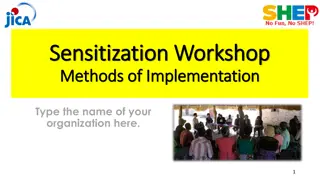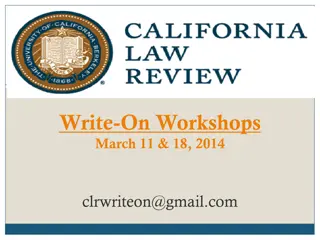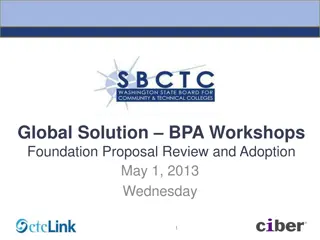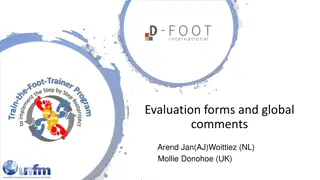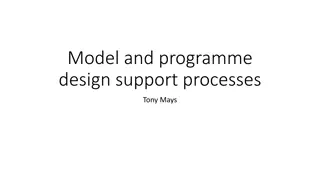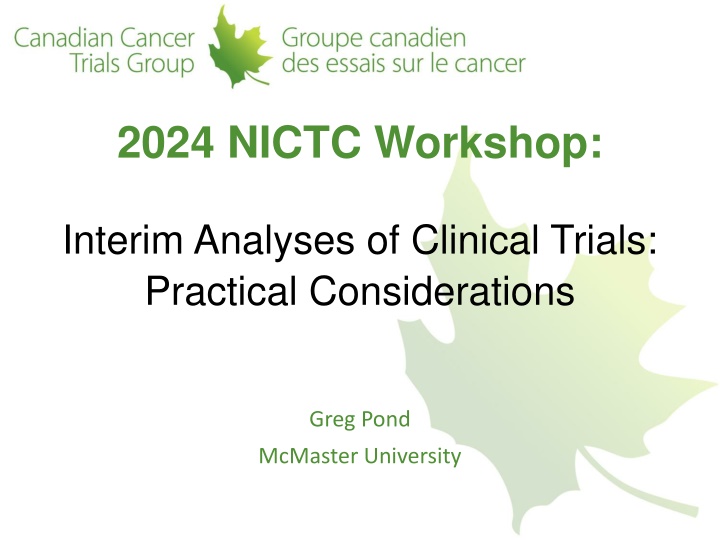
Practical Considerations for Interim Analyses in Clinical Trials
Explore the significance of interim analyses in clinical trials, understanding the types of analyses, decision-making considerations, and practical incorporation. Learn the what, why, when, how, and who of conducting interim analyses effectively for better trial outcomes.
Download Presentation

Please find below an Image/Link to download the presentation.
The content on the website is provided AS IS for your information and personal use only. It may not be sold, licensed, or shared on other websites without obtaining consent from the author. If you encounter any issues during the download, it is possible that the publisher has removed the file from their server.
You are allowed to download the files provided on this website for personal or commercial use, subject to the condition that they are used lawfully. All files are the property of their respective owners.
The content on the website is provided AS IS for your information and personal use only. It may not be sold, licensed, or shared on other websites without obtaining consent from the author.
E N D
Presentation Transcript
2024 NICTC Workshop: Interim Analyses of Clinical Trials: Practical Considerations Greg Pond McMaster University
Disclosures Traferox Technologies: Consulting Fees I have a close family member who is employed by Roche Canada and who owns stock in Roche Ltd. Many of these slides were initially created by Chris O Callaghan 2
Learning Objectives Describe different types of interim analyses Review the who, what, when, why, and how of conducting interim analyses Discuss considerations into interim analysis decision making how to incorporate practical 3
Interim Analyses in Clinical Trials: What, Why, When, How and Who
What? An interim analysis is simply an analysis of the data before data collection has completed , i.e. before the pre-specified criteria for a planned final analysis have been met 5
Why? An option to stop / modify the trial for: 1. Safety - spare patients overwhelming or excessive adverse events or non-beneficial treatment (risk:benefit ratio; ethical conduct) 2. Efficacy/Superiority - expedite declaration of benefit ( superiority ) thereby saving resources and maximizing impact (NDA, change of SOC) 3. Futility (or benefit or of trial conduct) - recognize logistical or practical impediments ($) 6
Why? 4. An opportunity to re-estimate the sample size - pursue encouraging results - response adaptive randomization or enrichment - rare. And must be a priori defined 5. An opportunity to modify the trial design - true adaptive trial designs (e.g platform, basket, etc) - amend protocol due to new, external information, or due to accrual concerns (careful!!!!) 7
When? Pre-specified (time or trigger); more than 1? Timing, timing, timing Need to balance valid and accurate decisions against expediency and efficiency: - Can it actually succeed? - depends on estimated unknowns: underlying event rate, presumed accrual rate and accrual pattern. - a rapidly accruing trial with a time-to-event analysis (e.g. disease progression or survival) in a moderate or relatively good prognosis population may not! 8
How? Trial assessed against pre-specified metrics according to pre- planned design: - Safety: deaths on trial, SAEs, rates of higher grade AEs, AEs of special interest/significance, etc. - Futility of Conduct: accrual rate, patient compliance, loss-to- follow-up, withdrawal of consent, observed event rate and pattern, etc. - Efficacy/Superiority: statistical significance of outcome measure - Futility of Effect: statistical significance of outcome measure 9
Aside: Power, P-value and Errors Sample State of Nature (Reality) UNKNOWN No Effect Effect Type II ( ) error Accept null hypothesis when it is false Statistical Analysis No Effect Accept null hypothesis when it is true Results of Type I ( , p) error Reject null hypothesis when it is true Effect Reject null hypothesis when it is false
Considerations for Statistical Analyses There is a cost to pay (in terms of alpha spending) for each interim efficacy analysis Each analysis increases the chance of an error To ensure the total trial error rate (alpha <0.05), each interim analysis / decision point must be based on alpha<0.05 11
Considerations for Statistical Analyses Depending on rules, you can have interim / final analyses with p- values of (say) 0.042 be not significant This cost may be avoided if a surrogate measure is used in the context of a decision-point interim analysis (e.g. PFS for phase 2 of phase 2/3 trial with primary endpoint of OS or to continue cohort in an adaptive trial design). 12
Who? Independent Data and Safety Monitoring Committee (DSMC) Experts with no interest in outcome of results Ensures integrity of the trial through unbiased decision-making, permitting Trial Committee Members and Principal Investigators to remain blinded to interim outcome data. CCTG maintains a standing DSMC Small, phase I (maybe phase II) safety analysis may not need independent DSMC E.g. 10 patients from 3 centres may be best reviewed by study and centre PI s 13
What if an Interim Analysis Stops the Trial? Futility of Benefit: 1. Stop further accrual 2. Expeditiously inform collaborating organizations 3. Consider whether patients that are apparently benefiting clinically may continue on treatment and how that decision will be made 4. Consider whether or how trial should continue and/or statistical analysis should be revised 14
What if an Interim Analysis Stops the Trial? Superiority/Efficacy: 1. Stop further accrual (?) 2. Expeditiously inform collaborating organizations 3. Consider whether patients that are on control arm should cross-over to effective arm and how that decision will be made 4. Consider whether or how trial should continue and/or statistical analysis should be revised 5. CAUTION: Consider effect on society (e.g. do regulatory bodies / funding authorities have needed information to assess benefit? Are there biosimilar agents under study?) 15
Questions? 16



